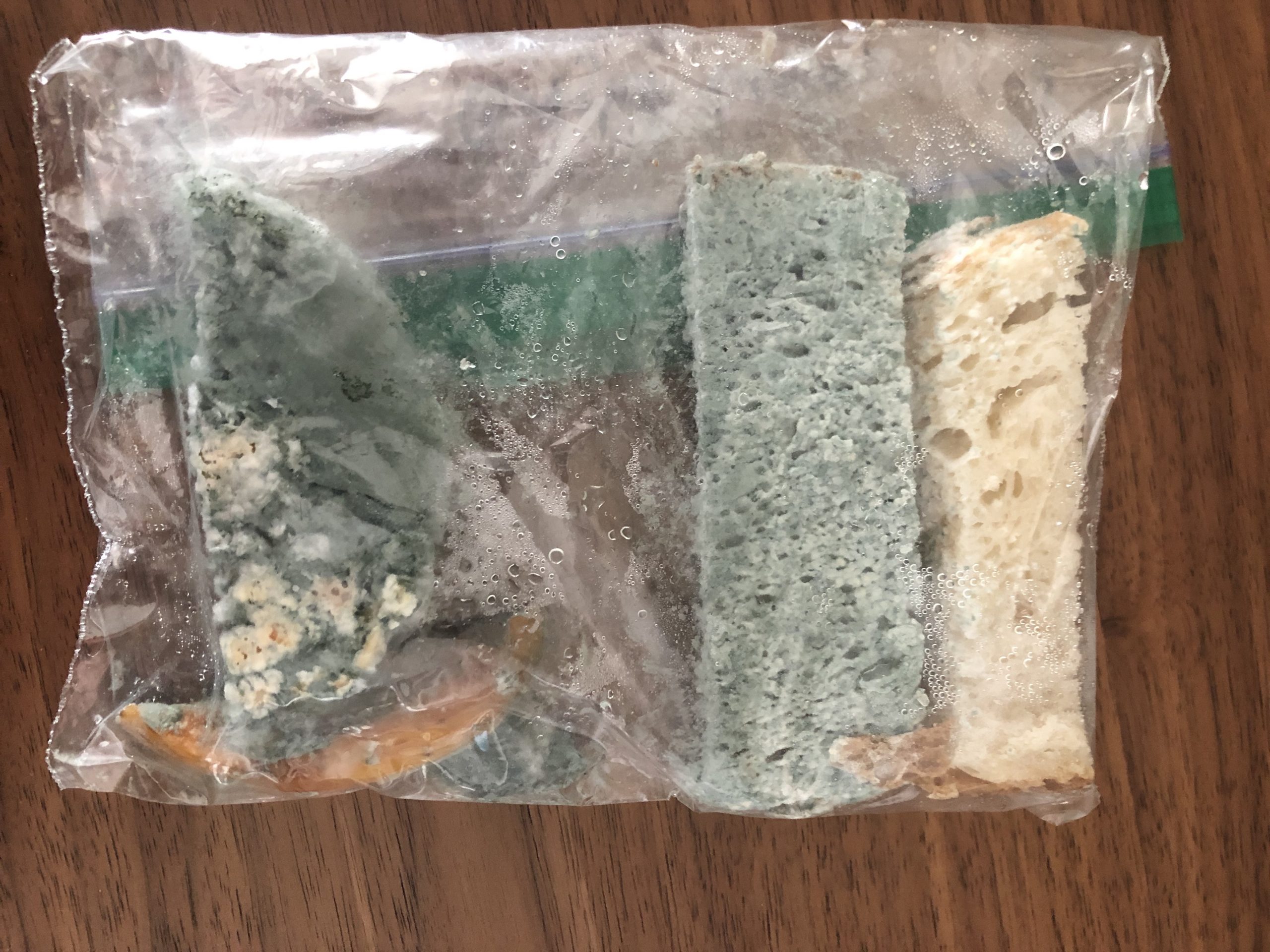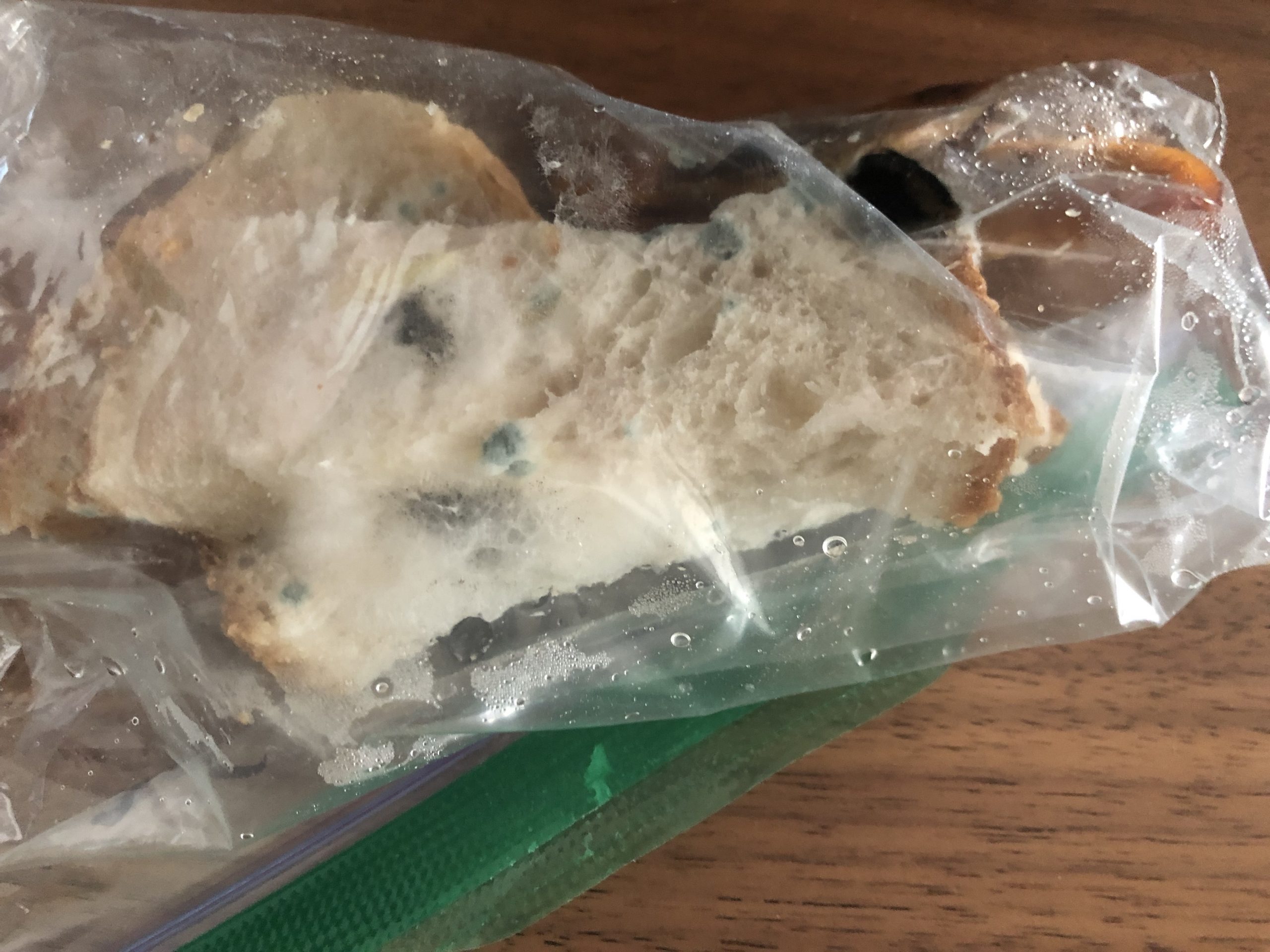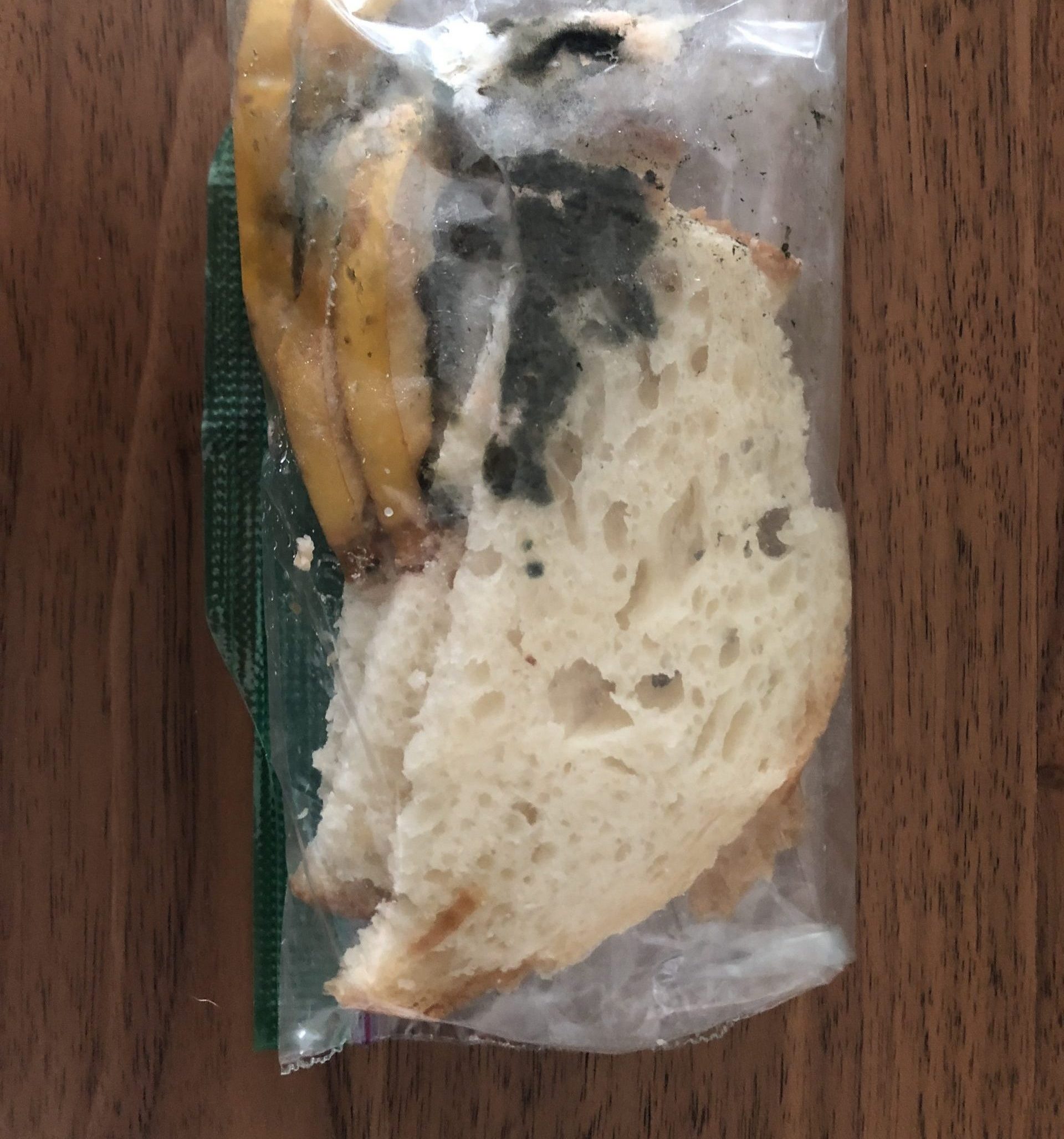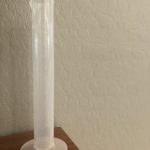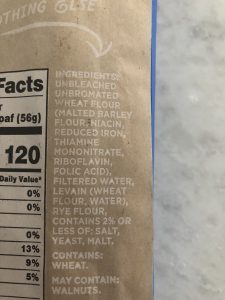MOLD GROWTH ON BREAD AND FRUIT
LEARNING OBJECTIVES
Differentiate between fungi and bacteria.
Perform basic mycological culturing.
Identify common household molds based on their macroscopic characteristics.
MCCCD OFFICIAL COURSE COMPETENCIES
Describe and utilize the process of scientific inquiry, its realm, and limitations.
Describe structural characteristics of the major groups of microorganisms.
Explain and demonstrate the mechanisms of microbial growth and metabolism.
NOTES
You want to grow mold, so you need bread that does not contain preservatives (natural or artificial). Please go the bakery section of the grocery store and look at the ingredients of bread they baked. Find bread that does not contain ascorbic, citric acid, or lactic acid and purchase that. Bread from the bread aisle will contain artificial or natural preservatives and therefore cannot be used in this experiment.
PHOTO REQUIREMENTS
Take a photo with your photo ID during the lab exercises when you see this icon.
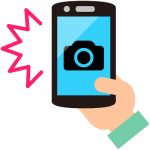
Paste the photos in the Sampling Microbes From The Environment Questions Document.
introduction
Mycology is the study of fungus. Fungi can grow in a wide diversity of environments, but most species require moisture. Fungi grow slower than bacteria, at a lower temperature, and lower pH than most bacteria prefer. Most fungi are unable to ingest food and must absorb nutrients from their surrounding environment. For this reason, fungi must grow directly on or in their nutrient source. Fungi secrete enzymes into their surroundings to help break down their food source and facilitate the absorption process. Fungi are eukaryotic organisms which grow as either unicellular yeast or multicellular mold.
Mold plays an important role in the environment by breaking down and digesting dead organic material. Mold reproduces asexually by producing microscopic spores, similar to seeds produced by plants. Mold spores are ubiquitous; they are found everywhere both indoors and outdoors. Mold spores can easily float through the air and can be carried great distances. The number of mold spores suspended in indoor and outdoor air fluctuates from season to season, day to day, even hour to hour. If mold spores land in a suitable growth environment, they will germinate to produce new mold.
Mold produce multicellular filaments called hyphae. Hyphal filaments intertwined into a mass, known as mycelia, can be seen macroscopically as fuzzy or hairy colorful growth. Mold absorb food through their extensive network of mycelia. There are three common household molds Rhizopus (white), Aspergillus (black) and Penicillium (green) you are likely to grow.

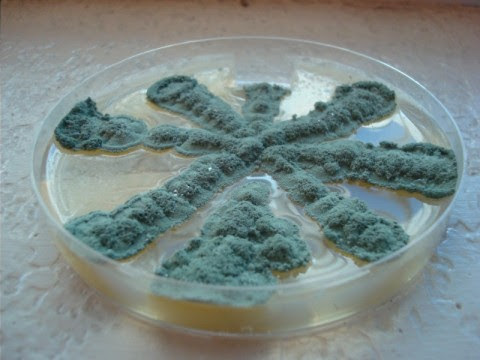
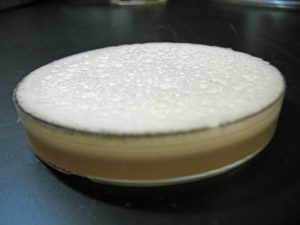
SCIENTIFIC METHOD
Question-What factors encourage mold growth on bread and fruit?
Hypothesis-Absence of light, neutral pH, presence of water and sugar encourage mold growth on bread and fruit.
Experimentation-You will vary light, pH, water, and sugar and observe if mold grows. One bright and dark bag will not have receive a change in pH, water, or sugar.
| REQUIRED SUPPLIES FROM THE LAB KIT |
| 100 ml graduated cylinder
|
| REQUIRED SUPPLIES YOU PROVIDE |
| Resealable plastic bag sandwich or quart size (8) |
| Lemon or lime juice can be squeezed from fruit or bottled lemon or lime juice (2 teaspoons) |
| Sugar-white (1/2 cup) |
| Measuring spoons |
| Measuring cup |
| Bread that does not contain artificial or natural preservatives. Check the label, the bread cannot contain ascorbic acid, acetic acid, lactic acid (6 slices cut into 4 pieces per slice for a total of 24 small pieces of bread)
|
| Apple-any variety (1) |
| Sharp knife |
| Stove and pot or microwave and microwavable bowl |
| Water-tap is fine |
| Cell phone or camera to take photos |
| Permanent marker |
| Cup or bowl for surface disinfectant |
| Bleach |
PROCEDURE
Please watch the brief video guide below and read all instructions carefully before you start the lab exercise.
EXPERIMENT VIDEO GUIDE
1. Wash your hands thoroughly with soap and water. Dry your hands with paper towel.
2. Prepare surface disinfectant. Using the 100 ml graduated cylinder add 180 ml of tap water to a cup or bowl. Using the 100 ml graduated cylinder now add 20 ml of bleach to the cup or bowl. The surface disinfectant (10% bleach solution) is now ready to use.
3. Disinfect your work surface with the surface disinfectant by applying surface disinfectant with a paper towel, allowing it to remain damp for 2 minutes, and then wiping away any remaining disinfectant with a dry paper towel. Throw the used paper towels in the trash.
4. Use the measuring cup to measure and add 1/4 cup or 4 ounces of water to a pot or microwavable bowl and mix in 1/2 cup of sugar.
5. Gently heat the water-sugar mixture on the stove or in the microwave, stirring occasionally until all of the sugar is dissolved. Use caution when removing the solution from the microwave/stove as it will be hot. Allow the solution to cool to room temperature. The cooled sugar-water solution will be a little thick, like syrup.
6. Use the permanent marker to label the 8 plastic bags:
Bright, Control
Bright, Water
Bright, Sugar
Bright, Lemon or Lime
Dark, Control
Dark, Water
Dark, Sugar
Dark, Lemon or Lime
4. Cut the 6 slices of bread into 24 pieces total (4 pieces from each slice).
7. Cut the apple into 24 slices.
8. Place 3 pieces of bread and 3 slices of apple into each plastic bag.
9. Add 1 teaspoon water to the two bags labeled Bright, Water and Dark, Water; add 1 teaspoon of the cooled sugar-water solution to the two bags labeled Bright, Sugar and Dark, Sugar add 1 teaspoon of lemon or lime juice to the two bags labeled Bright, Lemon or Lime and Dark, Lemon or Lime. Do not add anything to the bags two labeled Control.
10.  Take a single photo that includes all of the bags with your photo ID.
Take a single photo that includes all of the bags with your photo ID.
11. Find a well-lit, warm location (e.g. a windowsill or under a lamp) in which to place the 4 bags labeled Bright.
12. Find a dark, warm location (e.g. a warm closet) in which to place the 4 bags labeled Dark.
13. Disinfect your work surface with the surface disinfectant by applying surface disinfectant with a paper towel, allowing it to remain damp for 2 minutes, and then wiping away any remaining disinfectant with a dry paper towel. Throw the used paper towels in the trash. Dispose of left over surface disinfectant by pouring it down the sink and running water for at least 30 seconds. Wash your hands thoroughly with soap and water. Dry your hands with paper towel.
14. Examine the bags every day for 14 days and look for mold formation on the bread and apple pieces. Record the day (1-14) that mold growth was observed in the data table in the Mold Growth on Bread and Fruit Questions document. If no mold growth was observed in 14 days, record no growth. For example, if mold was first observed on the bread in the Dark, Water bag on day 3, record 3 in the data table. If no mold growth was observed in the Control, Dark bag after observing the bag every day for 14 days, record no growth in the data table. On day 14 record the number of pieces of apple (0-3) and the number of pieces of bread (0-3) in each bag that have mold growth in the data table.
AFTER 14 DAY INCUBATION WITH DAILY DATA COLLECTION
1. Wash your hands thoroughly with soap and water. Dry your hands with paper towel.
2. Prepare surface disinfectant. Using the 100 ml graduated cylinder add 180 ml of tap water to a cup or bowl. Using the 100 ml graduated cylinder now add 20 ml of bleach to the cup or bowl. The surface disinfectant (10% bleach solution) is now ready to use.
3. Disinfect your work surface with the surface disinfectant by applying surface disinfectant with a paper towel, allowing it to remain damp for 2 minutes, and then wiping away any remaining disinfectant with a dry paper towel. Throw the used paper towels in the trash.
4.  Take a single photo that includes all of the bags with your photo ID. Be sure the mold growth is visible in the photo.
Take a single photo that includes all of the bags with your photo ID. Be sure the mold growth is visible in the photo.
5. Do not open the bags when you are finished with the experiment, this will disperse mold spores. Dispose of the sealed bags in the trash and remove the trash bag from your living area.
6. Disinfect your work surface with the surface disinfectant by applying surface disinfectant with a paper towel, allowing it to remain damp for 2 minutes, and then wiping away any remaining disinfectant with a dry paper towel. Throw the used paper towels in the trash. Dispose of left over surface disinfectant by pouring it down the sink and running water for at least 30 seconds.
7. Wash your hands thoroughly with soap and water. Dry your hands with paper towel.
